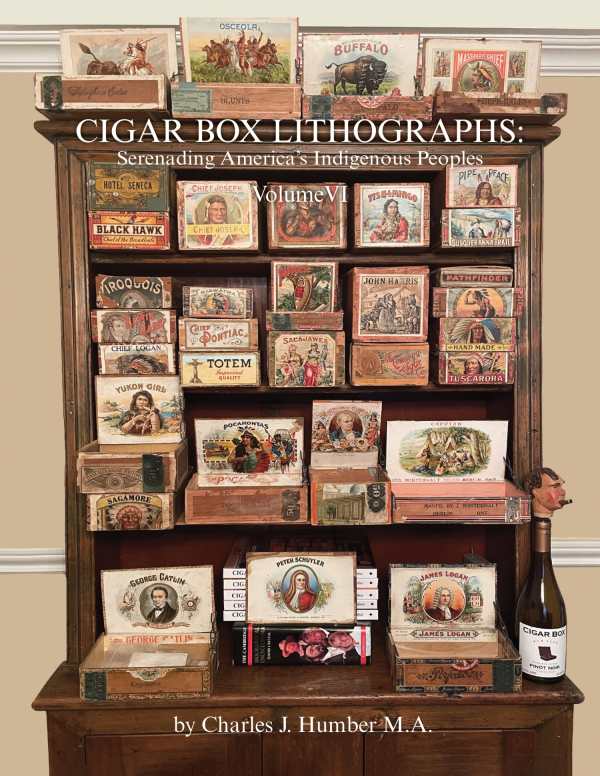Cigar Box Lithographs: Volume VI
Serenading America's Indigenous Peoples
A significant resource for collectors, Cigar Box Lithographs: Volume VI focuses on cigar box label depictions of Native Americans.
Written by a collector of cigar boxes since the 1950s, Charles J. Humber’s Cigar Box Lithographs: Volume VI is a continuation of his series spotlighting the unique beauty and historical significance of the lithographed labels adorning vintage wooden cigar boxes.
This series volume focuses on cigar box label depictions of Native Americans. It acknowledges occasional elements of exploitation and inaccuracy in the images but argues that much of the artwork reflects an admiration for Native Americans and their cultures. Rather than chronicling kitschy or stereotyped depictions, it “serenade[s]” the legacy of tribal leaders and traditions as portrayed in cigar box label art, reflecting on the fact that cigar box labels were often decorated with celebrated figures, alluring women, and historical scenes and landmarks that targeted a market dominated by white men. Depictions of Native Americans were less frequent, creating a scarcity reflected in the proclaimed high auction value of the included examples.
Over one hundred lithographic cigar box labels are represented in the volume, with images of the Apache Trail, Pacific Northwest totem poles, and the “mesmerizing” Yukon Girl. There are familiar names among the illustrated figures too, including Geronimo, Sacajawea, and the Nez Perce Chief Joseph. Summaries accompany each image, blending factual information with legends and anecdotes and commenting on the brutality of the United States military against Native Americans. Historical summaries of Manifest Destiny, the Trail of Tears, and the execution of defiant Modoc chief Captain Jack add context to these images. Native American allies are revealed among the portraits’ artists, too.
The book represents an eclectic yet cohesive range of historical and cultural images and information. Though some of the included items are timeworn, they are reproduced with clarity. Caricatured images are few among the featured lithographs, though some still romanticize and idealize Native Americans, reflecting the artistic sentiments of their periods. There are also supplemental examples of other Native American–themed advertising, including for beer, patent medicines, and “household goods”: A World War I–era “Live Indian” cigar box label depicting a nineteenth-century Native American family is contextualized as an artist’s contradiction of the contemporaneous assertion that “the only good Indian was a dead Indian.” Though no estimated monetary valuations of the cigar memorabilia are included, such insights make the book a significant resource for collectors.
A celebration of historical ephemera, the series entry Cigar Box Lithographs: Volume VI focuses on Native American–themed cigar box labels alongside commentary on the cruelties, injustices, and deprivations inflicted on their subjects.
Reviewed by
Meg Nola
Disclosure: This article is not an endorsement, but a review. The publisher of this book provided free copies of the book and paid a small fee to have their book reviewed by a professional reviewer. Foreword Reviews and Clarion Reviews make no guarantee that the publisher will receive a positive review. Foreword Magazine, Inc. is disclosing this in accordance with the Federal Trade Commission’s 16 CFR, Part 255.

